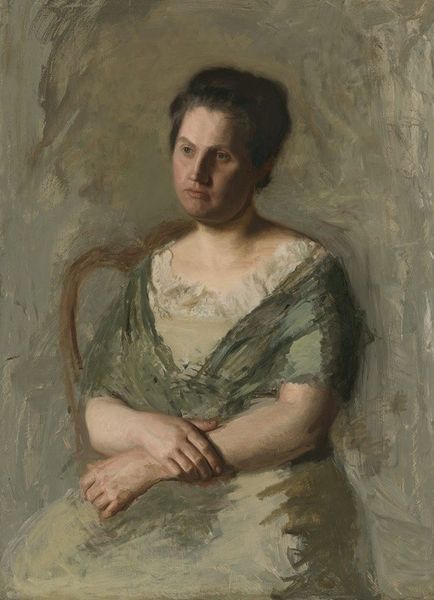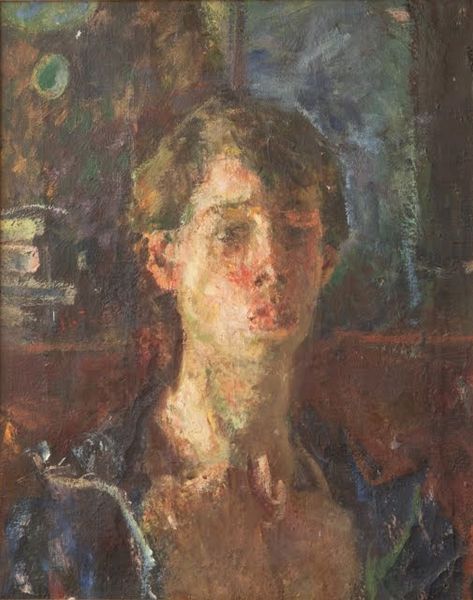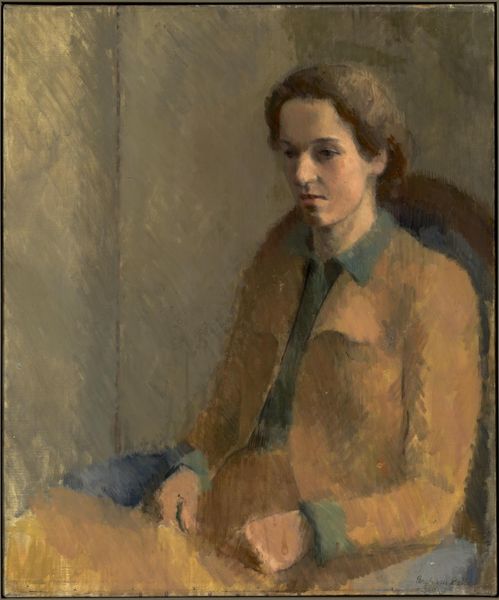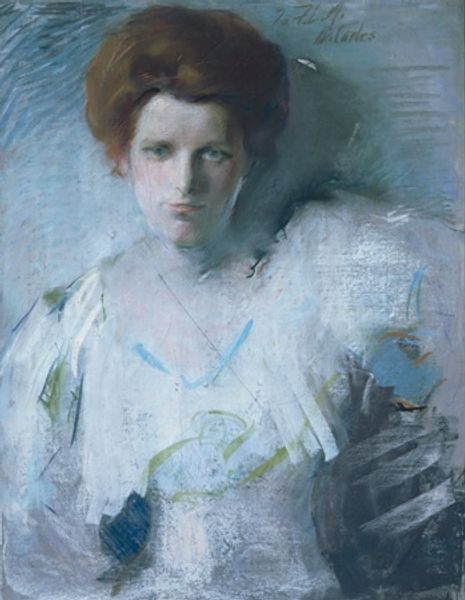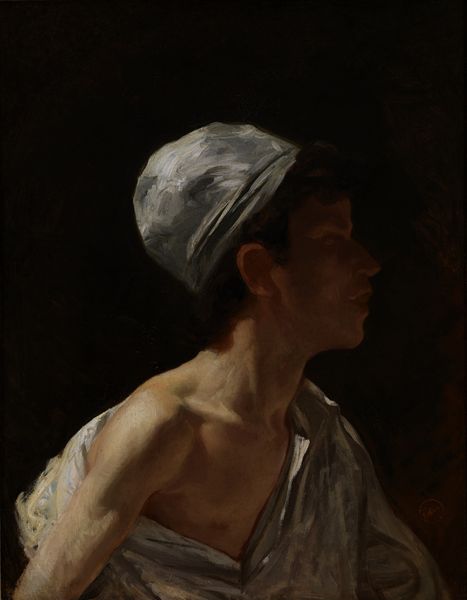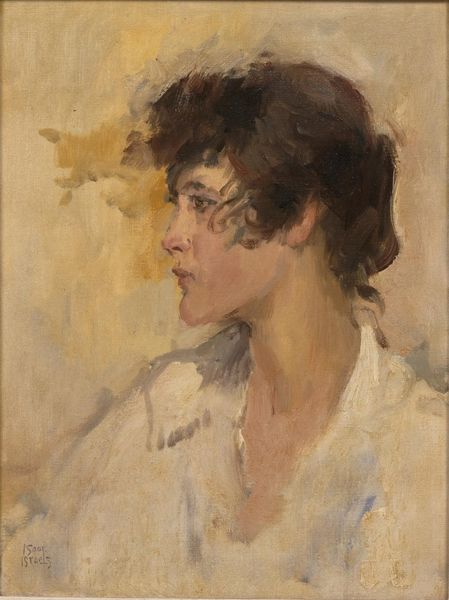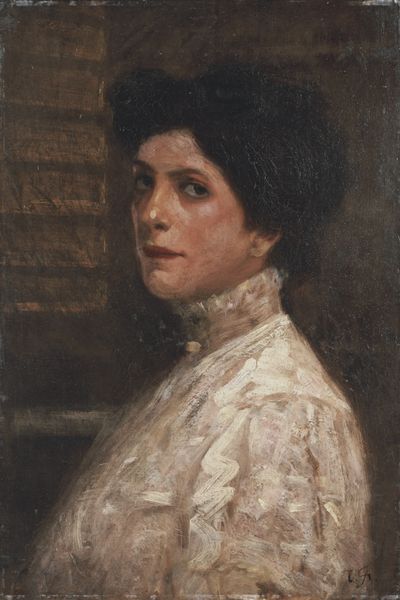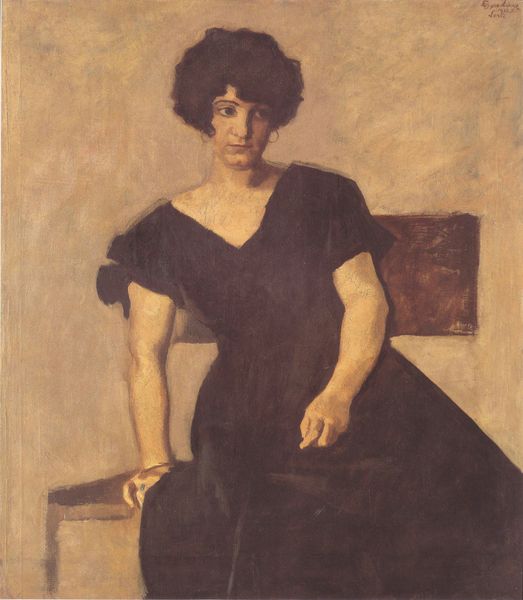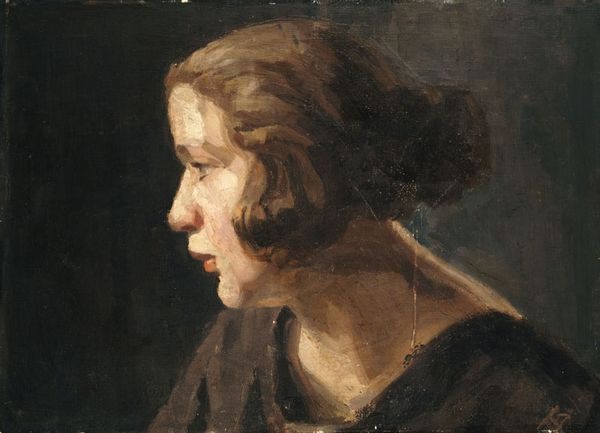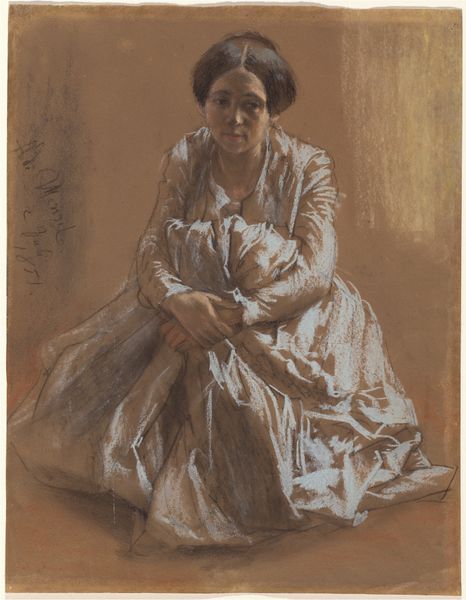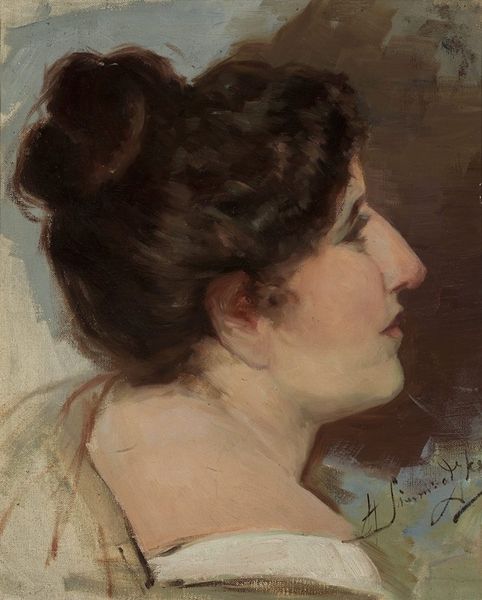
oil-paint, canvas
#
portrait
#
impressionism
#
oil-paint
#
charcoal drawing
#
oil painting
#
canvas
#
portrait reference
#
underpainting
#
portrait drawing
#
academic-art
#
portrait art
#
realism
Dimensions: 66 cm (height) x 57 cm (width) (Netto), 83 cm (height) x 74.2 cm (width) x 8.3 cm (depth) (Brutto)
Curator: Here we have Bertha Wegmann's "Study of a Female Model," dating from around 1879 to 1882. It's an oil painting on canvas currently held here at the SMK. What strikes you most about it initially? Editor: It’s evocative. There’s an air of contemplation; the subject's gaze is averted, seemingly lost in thought, yet their physical presence, the details of clothing, feel very grounded in lived experience. Curator: The brushwork is loose, especially in the background, suggestive of Impressionism. Wegmann trained extensively; notice the visible underpainting, perhaps charcoal, revealing layers of the artistic process and her material considerations. What can we deduce from those production elements? Editor: Precisely, and beyond technical facility, consider Wegmann's position as a female artist in a patriarchal art world. How might her gender and socio-economic background inform this depiction of the model, traditionally a position of male gaze and ownership? Is she subverting that dynamic through the sitter’s very autonomy and avoidance? Curator: Certainly. The sitter's somewhat unfocused look might suggest the model is an active participant, almost a collaborator in the portrait-making, or even an assertive client defining a novel vision. How might her dress, an everyday garment made out of white linen for example, shift our perception of her status or role within Wegmann’s social milieu? Editor: It challenges that traditional academic, upper class narrative; it pushes on social hierarchies present in artistic representation and labor practices within Wegmann’s own studios, and throughout artistic instruction facilities in the later 19th century. There are other artists depicting working-class female nudes throughout Paris at the time, yet the execution here feels almost as if the artist has a certain familiarity with her subject, whether intimate or not. Curator: Precisely; Wegmann's art stands in an uneasy intersection: highly competent craftsmanship displayed via readily available material, all channeled through academic artistic structures, and yet it is ultimately destabilizing gendered norms by presenting alternate modes of representation that consider labor both in production and representation. Editor: So by seeing the layered art-making, we may not simply examine art, but also ask broader questions concerning labor, visibility, agency, and modes of living for Wegmann and her sitter. Curator: Indeed. The work offers a remarkable window into the negotiations around identity and representation in late 19th-century painting practices. Editor: Yes, Wegmann provokes a reevaluation of these dynamics with just simple material engagements.
Comments
No comments
Be the first to comment and join the conversation on the ultimate creative platform.
